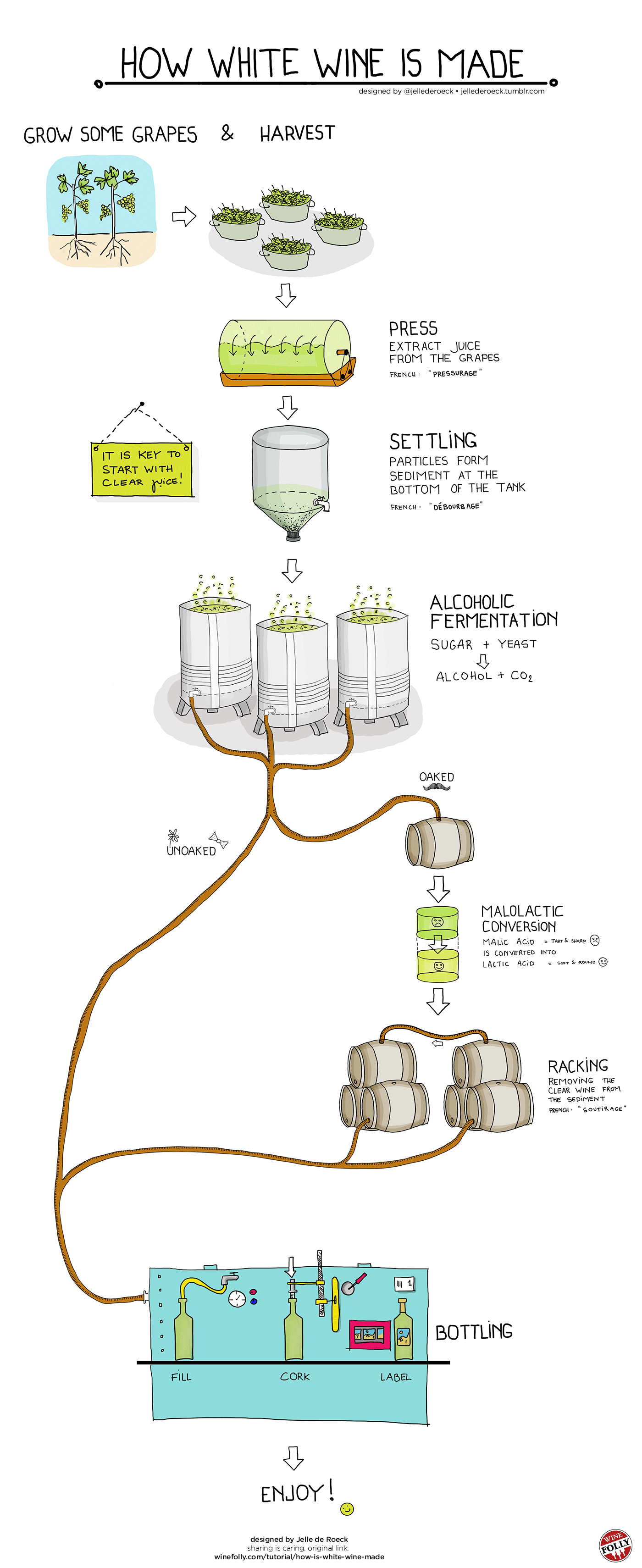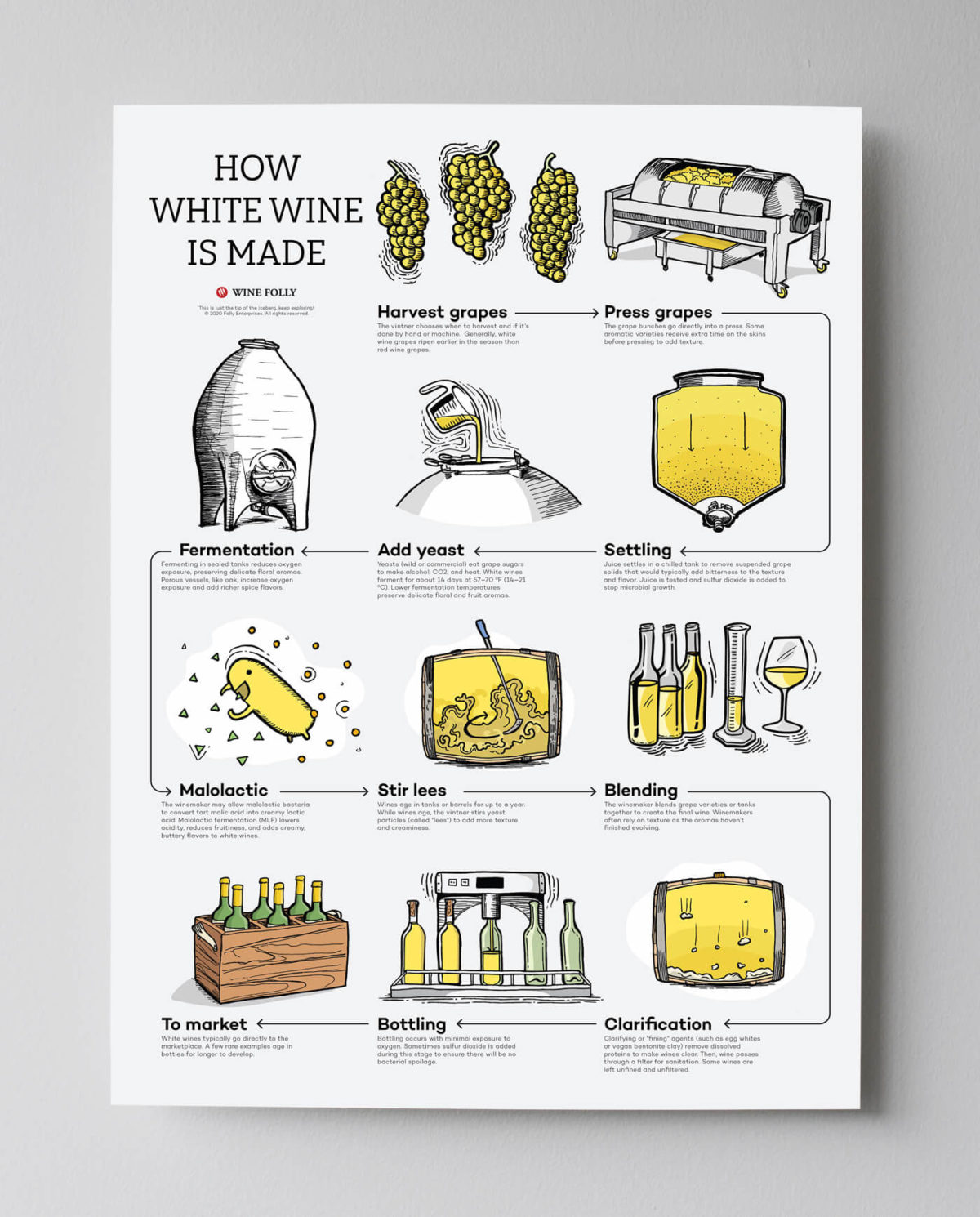When you look into how white wine is made, you’ll notice it’s different than red wine. Let’s walk through how white wine is made from grapes to your glass.
How White Wine is Made
One misconception about white winemaking is that you need to use peeled grapes. It’s true that you don’t want grape skins in most white wine fermentations, but the technique isn’t that laborious!
Learning about white winemaking gives us perspective because white wines are made differently than red wines. You’ll also improve your wine tasting abilities. So, let’s get into the 11 steps of how white wine is made.

Step 1: Harvest the grapes
You can use either red or white wine grapes to make white wine. The reason it’s possible to use red wine grapes is because the skins aren’t used in the fermentation (grape skins are what’s responsible for color).
That being said, most white wines use green and yellow-colored grapes. For example, Chardonnay and Riesling are both yellow-colored grapes!
Here are two other important factors winemakers consider for harvest:
- When to harvest the grapes: Ripeness is a major factor that affects wine flavor so it’s important to pick at the exact ripeness moment.
- Pick grapes at cool temperatures: Picking the grapes in the morning or night ensures the grapes make fresher-tasting white wines.
Another fun fact is grapes for white wines typically get picked earlier in the grape harvest season than red wines.

Step 2: Press the grapes
Picked grapes head immediately to the winery and go into a wine press. The press squeezes juice from the grapes which gets collected into a tank.
During this step, grapes also receive sulfur dioxide to stop bacterial spoilage before the fermentation starts. Check out this eye-opening article about sulfites and your health.
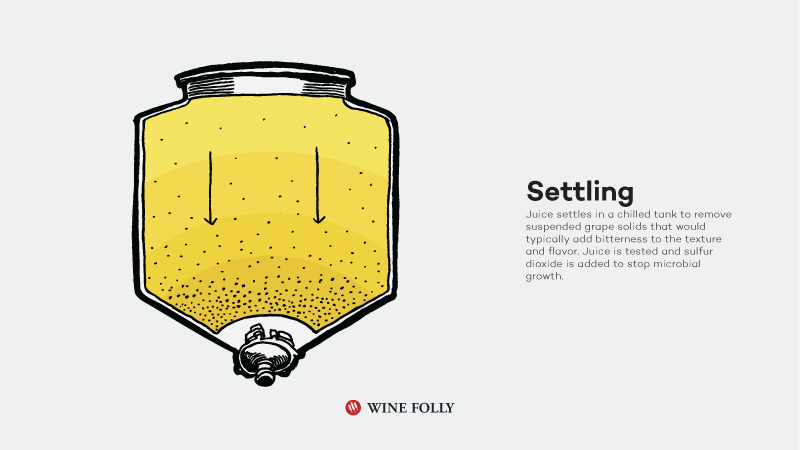
Step 3: Let the juice settle
The fresh-squeezed juice is cloudy and sweet! It sits in a tank for a little while to settle and chill down. The settling process helps remove suspended solids that would normally add bitterness to the finished wine.

Step 4: Add yeast to start the wine fermentation
What happens is small sugar-eating yeasts consume the grape sugars and make alcohol. The yeasts come either from a commercial packet (just like you might find in bread making), or occur spontaneously in the juice.
Spontaneous fermentation uses yeast found naturally on grapes!
Here are a couple of notes on wine yeast:
- Commercial yeasts allow winemakers to produce very consistent wines year-in-and-out.
- Natural yeasts are more challenging to make but often result in really interesting-tasting wines.
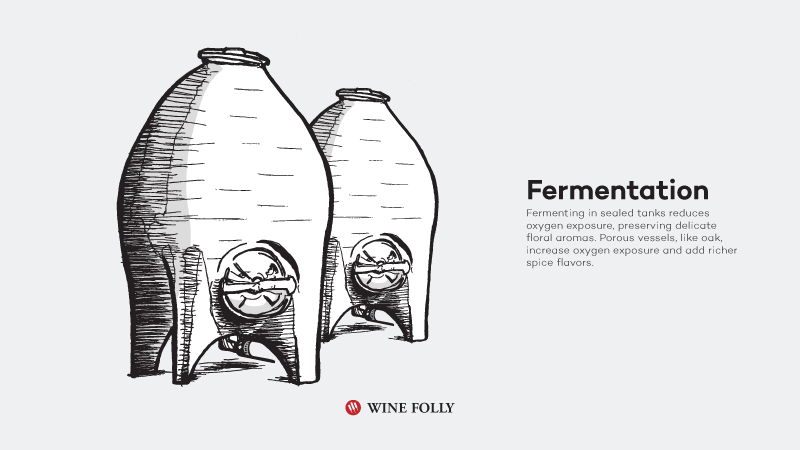
Step 5: Alcoholic fermentation
It takes about 14 days to ferment a white wine. In order to preserve delicate floral aromas, white wines ferment at cooler temperatures than red wines.
Additionally, white wine is rarely placed in an open fermentation tank. The goal is to reduce oxygen exposure which can burn off all those delicate aromas in white wine.
One interesting thing to note about winemaking in general is that the winemaker controls the sweetness level. If a winemaker wants a slightly sweet or “off dry” wine, they can simply stop the yeast from eating the sugars (usually by super chilling it). We call the remaining sugar “residual sugar.”
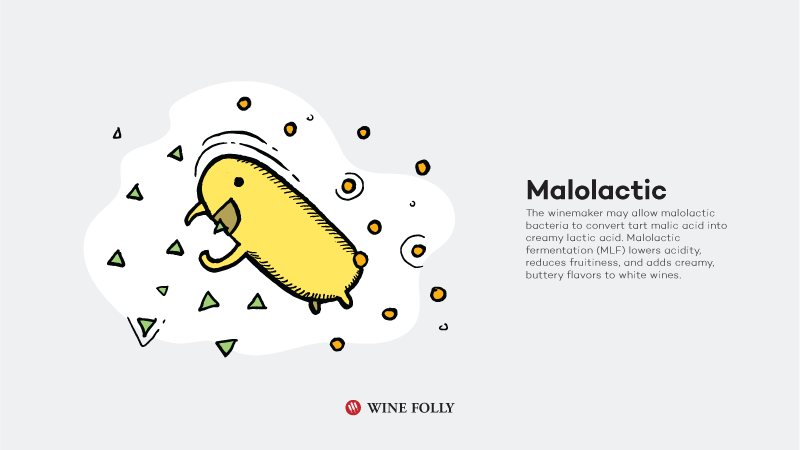
Step 6: Malolactic fermentation (aka “second fermentation”)
Malolactic fermentation isn’t an alcohol fermentation but an acid conversion carried out by a little bacteria. The bacteria eats malic acid found in the wine and poops out lactic acid.
The result is a really creamy, smooth, and buttery tasting wine. If this makes you think of Chardonnay, you’re exactly right! That creaminess you get in most Chardonnay is not a feature of the grape, but of this particular winemaking process.
Malolactic Fermentation is optional and honestly not used on many white wines. Still, once you recognize it in white wine, you’ll be able to identify it almost every time!
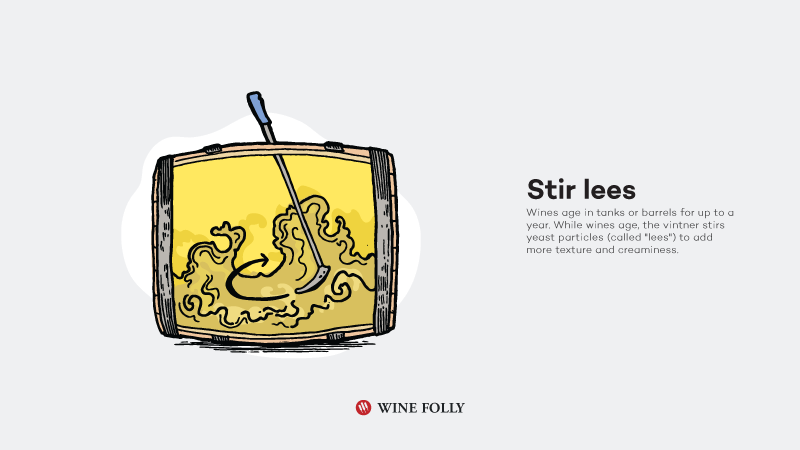
Step 7: Stir the “lees”
When the wine is done, it sits in tanks or barrels for a little while. During this time some winemakers use a tool that looks like a golf club to stir the wine.
Stirring causes all these little dead yeast particles, called lees, to float up into the wine. The lees add flavor to the wine (tastes kind of like beer or bread) and it also gives wine more of a creamy texture.
Check out this article for more information on white wines that receive lees stirring.
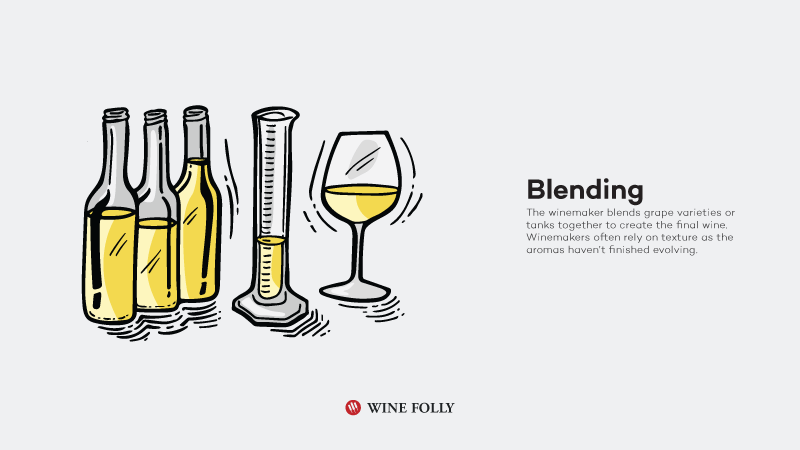
Step 8: Make the blend
After the wine is done aging it’s time to make the blend! While it’s common to have single varietal white wines, the winemaker can still go through a barrel selection process to create a single variety blend.
Since the wine is still somewhat awkward at this stage, the winemaker focuses carefully on texture to create a final wine.
If you’re curious to know more, definitely check out this list of famous wine blends to explore.
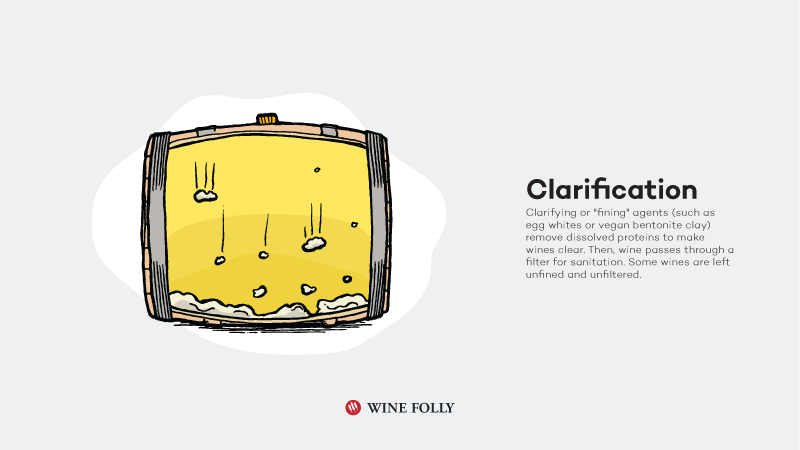
Step 9: Clarifying the wine
At this point, the wine is still cloudy. So, to make it clear, many winemakers add clarifying or “fining” agents to remove suspended proteins in the wine (proteins make wine cloudy).
Fining agents include casein (a milk derivative) or egg whites, but there is a growing group of white winemakers using bentonite clay because it’s vegan.
Finally, the wine gets passed through a filter for sanitation. This step reduces the likelihood of bacterial spoilage.
A few rare white wines (including orange wine) do not receive fining and filtering. The winemaker can simply wait patiently for the white wine to become clear with time!
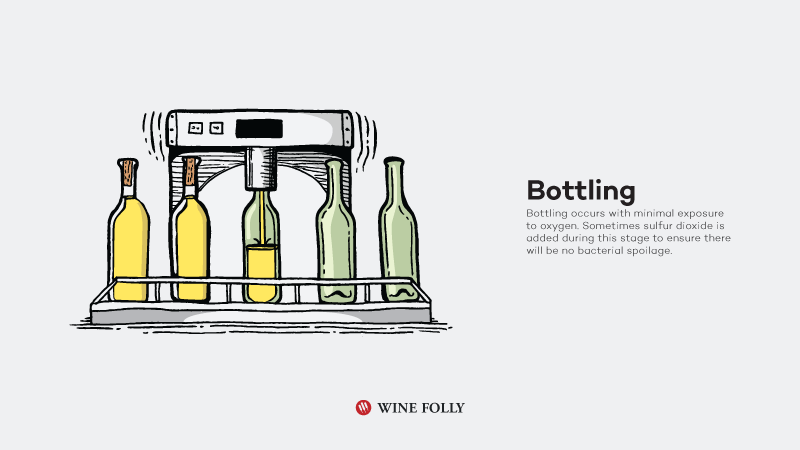
Step 10: Bottling and labeling wines
Now, it’s time to bottle our wine. It’s very important to do this step with as little exposure to oxygen as possible. A small amount of sulfur dioxide is often added to help preserve the wine.
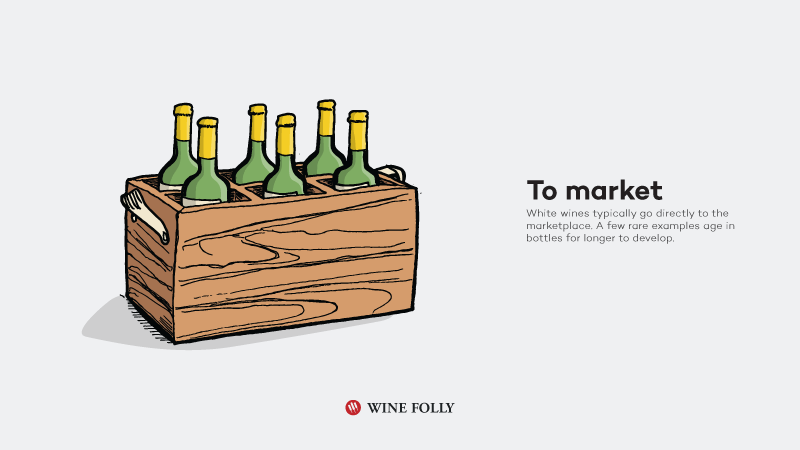
Step 11: Wine goes to market
For most white wines, the time to market is much less than red wines. This is because whites are loved for their fresh, fruity, and floral flavors – all of which come through freshness, not age.
Still, you’ll find a few fine white wines that receive extended aging and taste quite different from the rest.
Get The Winemaking Poster!
Support great wine education and share this poster with friends. It’s a fantastic way to expand your knowledge while tasting the good life. Made with love by Wine Folly in the USA.

